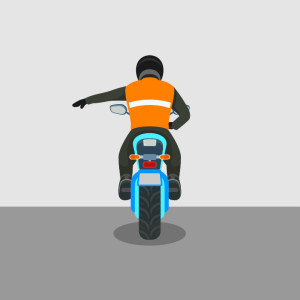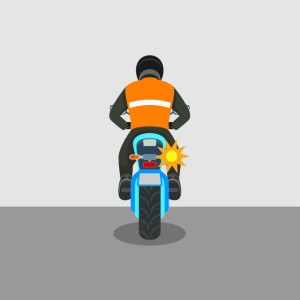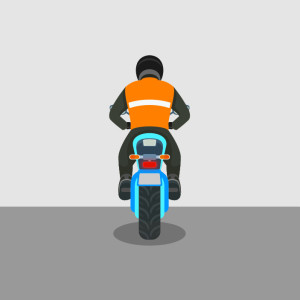Signals tell other road users you're changing your direction or position on the road. Knowing when and how to give signals is an important part of being a safe rider.
You must signal for at least 3 seconds before you:

Signalling when turning right
ImportantDon’t assume that other drivers have seen your signals. |
Use your left indicator or hand signal when you're:

Signalling left

Left-turn hand signal
Use your right indicator or hand signal when you're:

Signalling right

Right-turn hand signal
Remember to turn off your indicator. If you don’t, drivers may think you plan to turn and may pull into your path. Check your instrument panel regularly to see if you’ve left your indicator on.
ImportantAlways check your blind spots. Use your mirrors and turn around and look - this is called a head check. Do a head check whenever you need to use your indicator. |
Use your brake lights or hand signal to let people behind you know that you are slowing down or stopping. Brake lights are operated by the brake levers. You can help others see you by flashing your brake lights. Tap or pull the front brake lever several times, taking care not to actually apply the brakes.

Brake lights

Stop or slowing hand signal
Hazard lights are when all your indicators flash at the same time. If your motorcycle has hazard lights, you should turn them on when your vehicle becomes a temporary hazard to other road users, such as when: